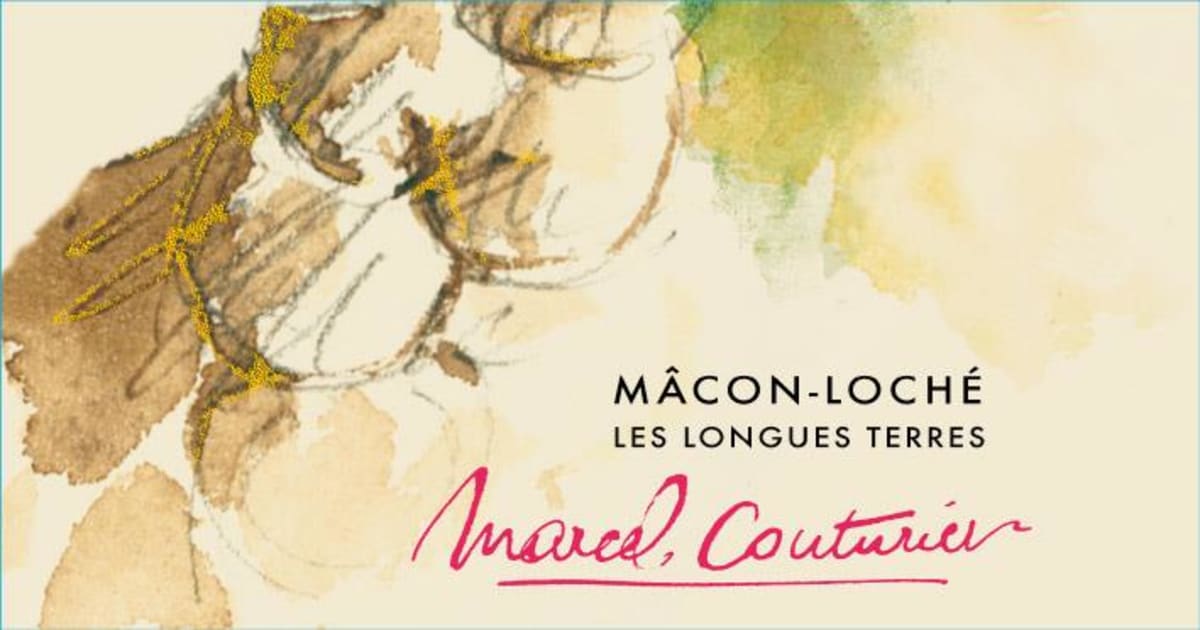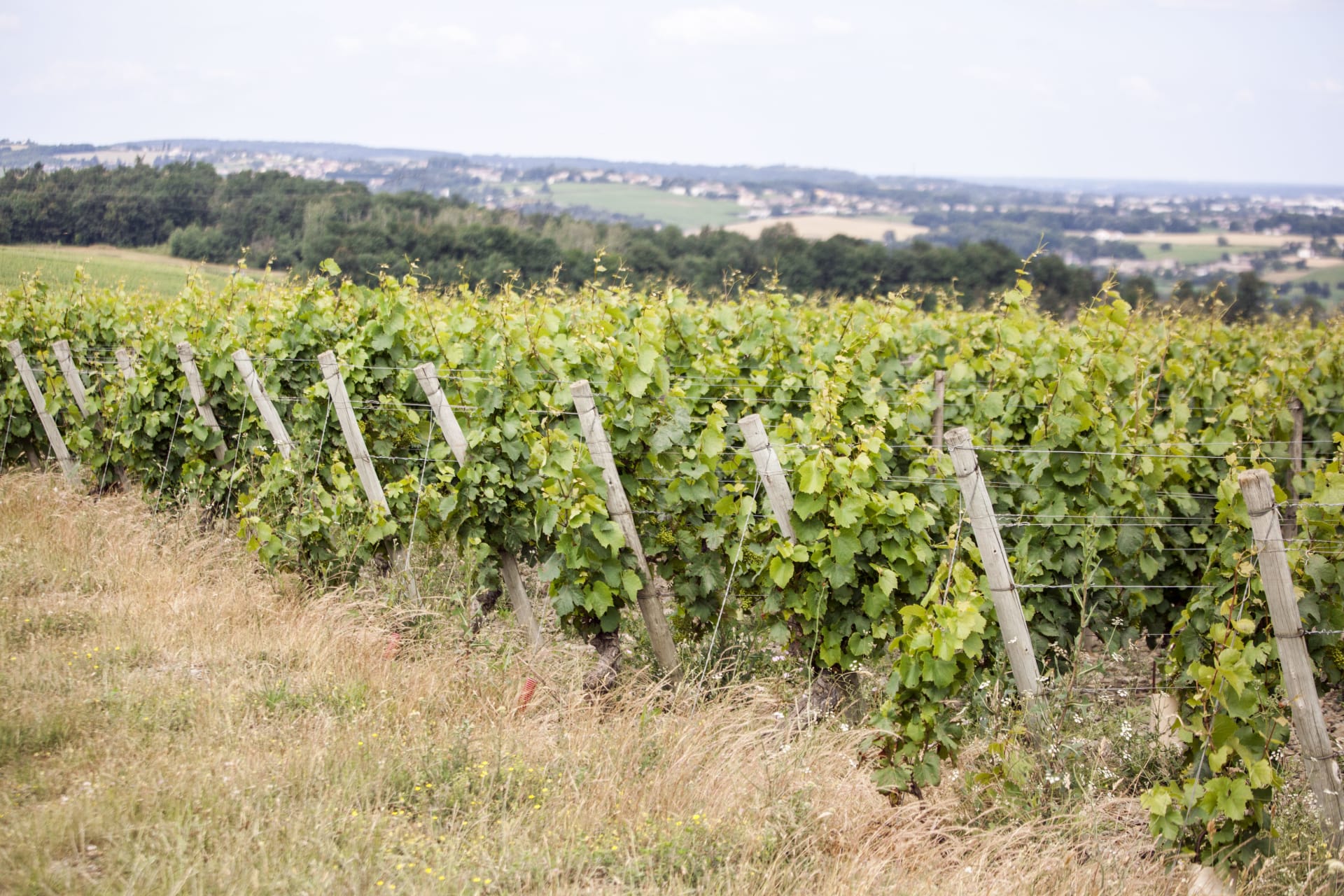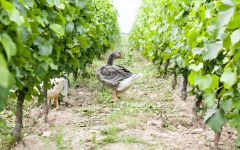Domaine Marcel Couturier Macon-Loche Les Longues Terres 2013


Product Details
Your Rating
Somm Note
Winemaker Notes
Other Vintages
2015-
Wine &
Spirits -
Robert
Parker








Domaine Couturier is led by the legendary Marcel Couturier, who comes from a long line of vignerons in the southern Mâconnais, in conjunction with the next generation of the domaine: his daughter Cladie and son Auxence. The domaine is just one of four producers who are estate bottling in Mâcon-Loché. Working with old chardonnay vines that have been passed down through generations of the Couturier family, Marcel began estate-bottling in 2005. The family has made a name for themselves throughout France and export markets for punching well above what the "Burgundy cognoscenti" consider the Mâconnais is capable of. The truth of the matter is that Domaine Couturier consistently produces soulful white Burgundies with exceptional transparency, complexity, and depth that often best wines from much more famous chardonnay addresses further north, all while offering consistently exceptional value.
The Couturier family likes to take their time, working intuitively, respecting each terroir and resulting wine. Descending from many generations of farmers in the Mâconnais, Marcel Couturier is very patient and pragmatic in the vineyard and the cellar, allowing time for each wine to reveal itself. Marcel has stood out as a traditionalist with old vines and high standards in an area quickly defining itself as a source of top-notch white Burgundy.
Farming is meticulous at Domaine Couturier, employing only certified organic (Ecocert 2021) and certified biodynamic (Demeter 2022) methods. They work soils with ground cover between rows to regenerate the hard, poor clay soils, which greatly benefit from the aeration and the introduction of native organic materials. Auxence has brought his passion for regenerative farming and natural wines to the winery, which has only resulted in greater transparency in the wines. Their farming style could be described as regenerative in that they take great care to improve the soil in each vineyard, paying close attention to what each vineyard needs based on its individual soil type. They let their chickens, geese, and guinea fowl roam the vineyards for natural pest control and to add valuable nitrogen to the poor Burgundian soils. As the summers get warmer in Burgundy, they keep a keen eye to pick each vineyard at exactly the right moment to maintain the crucial element of acidity, providing freshness and liveliness in their wines.
In the cellar, the approach is equally hands-off. Traditionally, Marcel is known for being a non-interventionist, utilizing spontaneous, native yeast fermentation, which takes place deep in their cold cellar in Loché. At harvest, whole bunches are hand-picked, and once the bunches are pressed, they allow the must to settle for up to two days (static settling). Sulfur is not added to the bunches when they arrive in the winery, and the resulting wild-yeast fermentations are long and cool, as they never rush the fermentation by warming the cellar. Both alcoholic and malolactic fermentations occur naturally in traditional French Burgundy barrels. Some of the gross lees are retained during fermentation, resulting in a small amount of skin contact during both fermentation and élevage. Once the must is in the barrel, it is basically left alone from that point until they are bottled. The wines ferment and age in the same barrels without racking or bâtonnage, as they are wary of making them too fat and leesy. The wine is racked only once prior to bottling. The Couturier approach follows the natural rhythms of the seasons and employs the lowest intervention winemaking possible: the wine is put into barrel and left there until right before the following harvest. Depending on the vintage, only the necessary amount of sulfur dioxide is added before bottling. Couturier wines offer incredible delicacy with aromatic purity and complexity as a result.

One of the most popular and versatile white wine grapes, Chardonnay offers a wide range of flavors and styles depending on where it is grown and how it is made. While it tends to flourish in most environments, Chardonnay from its Burgundian homeland produces some of the most remarkable and longest lived examples. California produces both oaky, buttery styles and leaner, European-inspired wines. Somm Secret—The Burgundian subregion of Chablis, while typically using older oak barrels, produces a bright style similar to the unoaked style. Anyone who doesn't like oaky Chardonnay would likely enjoy Chablis.

These are the fun, fruit-driven and lively Chardonnays of white Burgundy, often offering some fantastic values and options that you don’t have to cellar. Flavors range from fresh green apple and lemon to melon or pineapple; some of the best are fleshy and mineral driven or balanced by a light touch of oak.
Mâconnais Chardonnay may have the weight of their more serious Côte de Beaune sisters, but not quite the refinement. Still, this appellation is one of the best ways to jump from California Chardonnay to something new and begin to understand white Burgundy.
The Mâconnais region is warmer and drier than the rest of Burgundy to its north (Côte d’Or) and has a landscape of rolling hills and farmland interspersed among vineyards. The region produces a lot of Chardonnay—Viré-Clessé and Pouilly-Fuisse are among the best—and a very small amount of red wine from Gamay and Pinot Noir. The soils of Mâconnais remain limestone dominant like in the Côte d’Or, making it a wonderful spot for Chardonnay to thrive. Gamay's home of Beaujolais lies just to the south.
